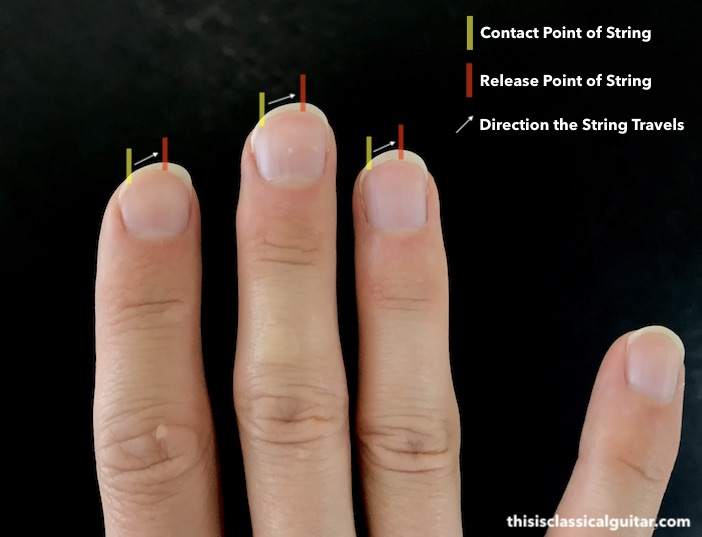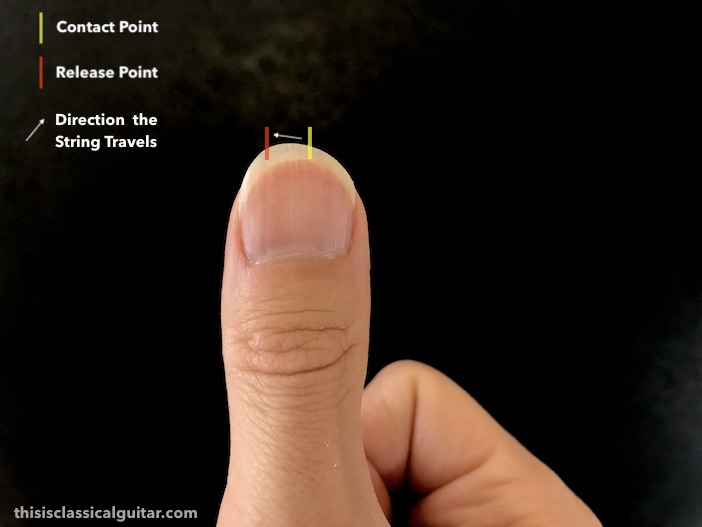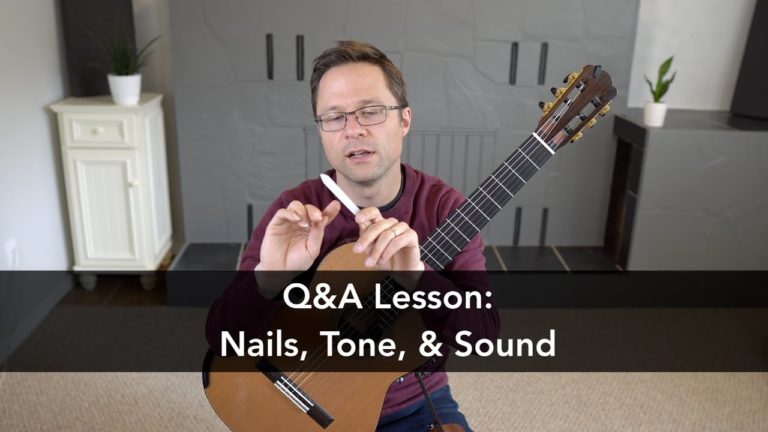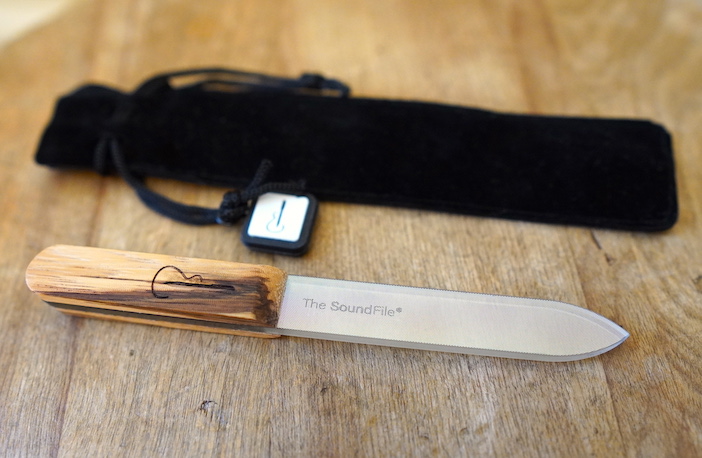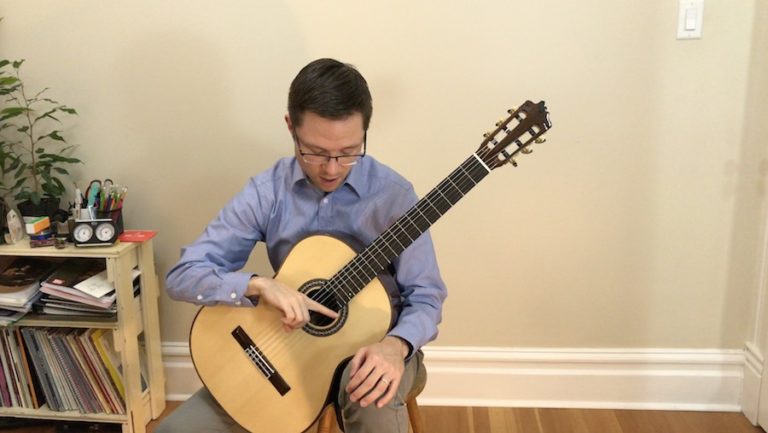Can you play classical guitar without nails? Yes, it’s perfectly fine to play without nails on classical guitar but you might get a little less volume, clarity, and control. That said, you’ll get a nice warm and consistent sound and you won’t have to worry about breaking a nail. Nails are great and once you’ve grown them, shaped them, and polished them, they take very little daily maintenance. If you have nail problems, fake nails are pretty good these days too, lots of pros use them. I’ve had plenty of great students who could play without nails at a high level due to their sports, hobbies, profession, gardening, or because they constantly break nails. Here’s so pros and cons of both sides:
Pros of Playing with Nails
- Increased Volume – Nails allow you to ‘dig in’ to the string a little more and get more sound from the string since the little ramp on the nail extends inward into the guitar during your stroke. On the concert stage that is important for professionals.
- Clarity of Sound – The sound of nails can sound a bit more clear and glassy compared to flesh. This is generally a good thing on the concert hall stage where you want to cut through to the audience members at the back of the hall or in an ensemble performance.
- Ability to dig in – When digging in hard (a deeper follow through to the stroke), I feel it’s easily to bypass the other strings and have a freer stroke and higher hand position
- Control – The shape of the nails gives the player a bit more technical control in some situations. The placement on the string with both nails and flesh is very secure. It also allows an optimal angle for the fingers to move past the string and into the palm.
- Variety of Tones and Timbres – Your range of timbres with nails is greatly expanded from warm sounds to harsh nail scrapes. Some modern repertoire might require this timbral range.
Pros of Playing Without Nails
- No Maintaining Perfect Nails – Trying to keep your nails in perfect shape can be difficult depending on your lifestyle and hobbies.
- You’ll Never Break a Nail – When you break a nail it’s like the world has ended.
- Annoyance of Long Nails – Some people can’t stand having long nails and if you do any handy work or sports (rock climbing!).
- Poorly shaped and polished nails produce a bad sound – If you don’t maintain your nails and polish them perfectly your tone will be worst than ever. You can skip this problem altogether and get a consistent sound.
- Mellow and warm resonant sound – This can be great for some textures. It can also be a nice plucky sound for early music and other styles.
Playing with other guitarists and large halls
I’ve always liked players who play solos without nails but once they play in an ensemble of other guitarists who do use nails they run into serious trouble blending and keeping up with clarity and volume. And certainly on the concert stage in larger halls the mellowness increases to such an extent as being mushy and undefined. At home, in the studio, or in smaller halls it can work, but more complicated textures
Make sure you’ve tried playing with nails
If you’ve never played with nails before I certainly recommend trying it. It takes a long time to get them perfect but it’s worth it in terms of control and sound. You can check my full article on How to Shape and Play Classical Guitar with Fingernails.
Video by Brandon Acker
Here’s a great summary and some history about nails on guitar by Brandon Acker via his YouTube channel.
Fingernail Diagram
From my full article on How to Shape and Play Classical Guitar with Fingernails.
